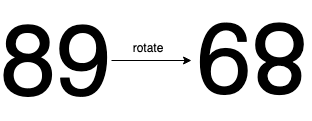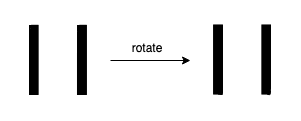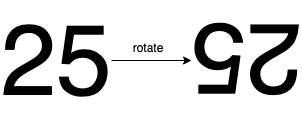Given a number N, return true if and only if it is a confusing number, which satisfies the following condition:
We can rotate digits by 180 degrees to form new digits. When 0, 1, 6, 8, 9 are rotated 180 degrees, they become 0, 1, 9, 8, 6 respectively. When 2, 3, 4, 5 and 7 are rotated 180 degrees, they become invalid. A confusing number is a number that when rotated 180 degrees becomes a different number with each digit valid.
Example 1:
Input: 6 Output: true Explanation: We get9after rotating6,9is a valid number and9!=6.
Example 2:
Input: 89 Output: true Explanation: We get68after rotating89,86is a valid number and86!=89.
Example 3:
Input: 11 Output: false Explanation: We get11after rotating11,11is a valid number but the value remains the same, thus11is not a confusing number.
Example 4:
Input: 25
Output: false
Explanation:
We get an invalid number after rotating 25.
Note:
0 <= N <= 10^9- After the rotation we can ignore leading zeros, for example if after rotation we have
0008then this number is considered as just8.



